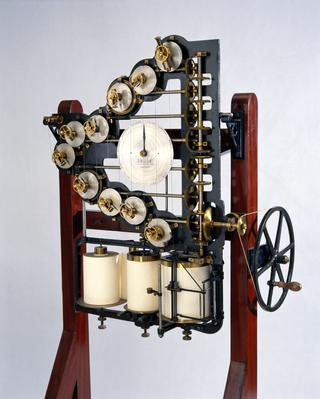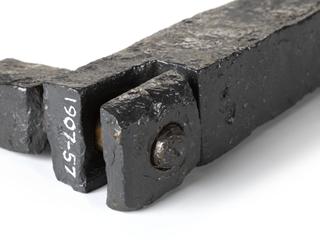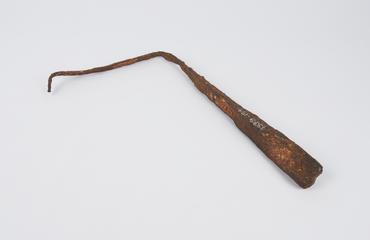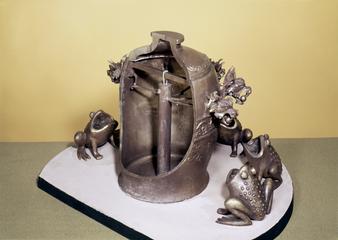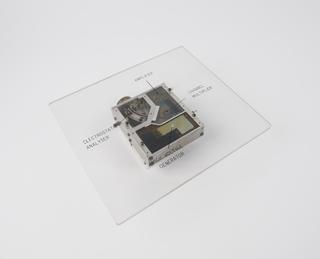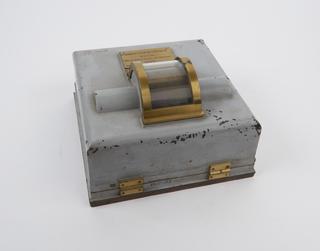
Prototype Martin-Clark resistivity meter
The Prototype Martin-Clark resistivity meter was built in 1956 by John Martin and Antony Clark.
The meter is small handheld instrument with a grey rectangular metal casing, on the top side of which are two dials to control the voltage of the meter and to measure electrical resistance in ohms. Connected to the meter from one of its sides are five separate wires, which would connect to the steel probes.
More
In 1956 John Martin and Antony Clark collaborated to produce an archaeological instrument which could detect potential buried historical sites and buildings from the surface by measuring the resistivity of the soil. This resulted in the development of the first prototype resistivity meter.
Generally, locations with natural and undisturbed soil and clay have low electrical resistance because they have high water content, meaning electricity passed through the ground more easily. By contrast, buried man-made structures and sites were very often made of compacted rock and gravel, which reduces the water content and makes them more electrically resistant.
The Martin-Clark resistivity meter would be connected to the ground by short two pairs of steel probes which supply an alternating current to the ground. The meter could then measure the amount of electrical resistivity (measured in ohms) in the area between the two pairs of probes, which could then be extrapolated to determine the likelihood that man-made structures are buried in the area.
One limits of this method of archaeological surveying using the Martin-Clark resistivity meter was that it could only measure the resistivity of an area to a depth of 1.5 times the spacing between the probes, which could not be placed too far apart to create a reliable electrical current.
The first experimental survey using this new technology was in 1956 at the site of the ancient Roman town of Cunetio in Wiltshire and was carried out by Anthony Clark.
- Materials:
- plastic (unidentified) and metal (unknown)
- Object Number:
- 1977-60 Pt1
- type:
- prototype
- Image ©
- The Board of Trustees of the Science Museum
